Review: LG Intuition for Verizon Wireless
Sep 18, 2012, 4:30 PM by Eric M. Zeman
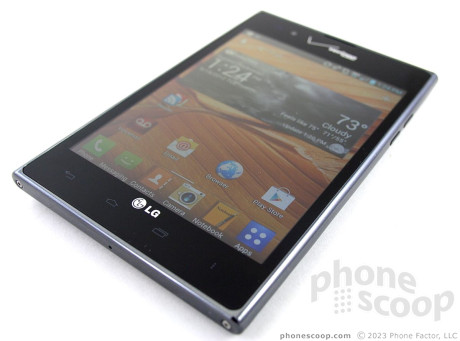
The LG Intuition is one of the biggest phones in the market. This widescreen behemoth is part smartphone, part tablet, and all sorts of awkward. Find out what Phone Scoop's intuition says about the Intuition.
Form
Is It Your Type?
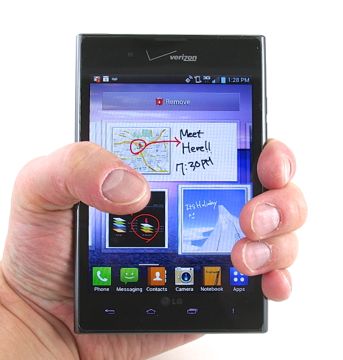
The Intuition is LG's response to the Samsung Galaxy Note. It's a massive smartphone that no one should purchase without using it first. The Intuition, like the Note, is a "phablet" — falling somewhere between a smartphone and a tablet in size and use case. For those who don't want to own two devices and would rather get as much as possible from a single form factor, a device such as the LG Intuition could be the middle-ground solution that works.
Body
The LG Intuition is not for the feint of heart, nor the small of hand. It's comically large, but carrying it around and using it day in and day out is no joke.
The overall appearance is fine, I suppose, with black plastics, chrome-y accents, and glass. When you call it a black slab, you're really not kidding; it redefines the word. I like that the back cover of the Intuition has a dimpled pattern with a matte finish. (Plain, glossy plastic would have made me cry.)
If you thought the Galaxy Note was awkward, the Intuition is even more so. It's wider than the Note by about a centimeter, thanks to the 4:3 aspect ratio display, and it's completely uncomfortable to use and hold in one hand. The Intuition is a two-handed device, plain and simple. I have large hands, and I can't wrap my fingers all the way around it. I doubt even Wilt Chamberlain could hold this phone comfortably.
Want to stick it in your pocket? I hope you have some large pockets and loose jeans. The other night, I stuck it in my jeans and walked about a half mile to see a local band at my favorite bar. The Intuition barely fit. I noticed its presence with every step to the bar and home. It was more comfortable in my back pocket, but also more likely to be snapped in two if you forget it's there. Sitting in a car with the Intuition in my front pocket was painful.
The materials and build quality of the Intuition are fine. The fit and finish is particularly good, and nothing about the Intuition comes off as cheap or shoddy.
As you might have guessed, the front of the Intuition is all about the display. It measures 5 inches across. The 4:3 aspect ratio - the same as older television and computer monitors - is what gives it the gawky width. Worse, there's plenty of bezel surrounding the display, especially above and below the screen.
There are four capacitive buttons below the display, and I had a hard time adjusting to them. The backlighting for these vital control keys goes dark far too quickly, in about 5 seconds. The buttons were responsive, though. The real problem is the placement of the back button. It's the left-most button on the phone. I hold cell phones in my right hand. My thumb could not reach the back button. I had to use my other hand to press it. This gets old quickly. If you hold your phone in your left hand, this won't be an issue.
The SIM card tray is on the left edge of the Intuition. As with other devices that use microSIM cards, you'll need a small paperclip to pop the tray open. The volume buttons are on the right edge of the Intuition. The two buttons are small, but I thought they were easy to find and use. There are also two buttons on top. The lock button has a good feel and I didn't have any trouble using it. The other button is a dedicated launcher for LG's QuickMemo app. QuickMemo is LG's rival to Samsung's S Note app. It's a bit odd for an app to have a dedicated button, but the button works fine. There is no dedicated camera button, which is a shame considering there's more than enough room for one.
Looking for the ports? They are on top, both the 3.5mm headset jack and microUSB port. The microUSB port is protected by a little sliding door. This is one of my favorite setups for microUSB ports. The port is protected from pocket lint, but not by an annoying hatch that sticks out. The Intuition's battery is non-removable, so the back cover remains snugly in place.
For me, the Intuition is simply too difficult to use one-handed. I often resorted to using two hands, or putting the Intuition on a flat surface to interact with. It's not the type of phone you can use easily while striding through an airport towing luggage with the other hand. This is important to consider before purchasing this device.
Performance
Screen
The Intuition's 5-inch display uses the same In-Plane Switching (IPS) LCD panel found in Apple's iPad (some of which are made by LG.) The Intuition's screen has 1024 x 768 pixels. As far as smartphone displays go, it does the job. Individual pixels are nearly impossible to pick out, colors looked great, and it has a wide viewing angle. Brightness was excellent for indoor use, but not enough for outdoor use. I had a hard time seeing the clock under sunny skies, and taking pictures was a chore.
Signal
The LG Intuition performed on par with other Verizon Wireless devices tested in the greater New York City area. Verizon's LTE 4G coverage is quite good, and the Intuition remained on 4G throughout the duration of my test period. It didn't matter how many bars of signal registered on the signal indicator, the Intuition was always able to make/receive phone calls and surf the web. Speeds were definitely slower when there was poor coverage, but that was the only issue I noticed.
Sound
The Intuition is an acceptable voice phone, but just barely. Call quality was routinely poor. I experienced a lot of static and other interference when making calls. There were also some nasty echos and screechy sounds. The one plus is that the earpiece is loud enough to make sure you hear all that noise no matter where you are. Voices that came through were muffled and metallic sounding. The speakerphone amplifies these problems in the worst way, but not so much that it's loud enough for use in noisy spaces. If you want to use the speakerphone, make sure you're in a quiet space. Ringtones and alerts were OK, but not great. The vibrate alert was also weak. I missed more than a handful of calls because I wasn't able to hear/feel the Intuition.
Battery
Battery life was not as good as I hoped it would be. The Intuition has a (non-replaceable) 2,080mAh battery buried inside, and quite often it was exhausted before the end of the day. There's no way to toggle LTE 4G on/off, so you have to use other methods (screen brightness, account sync, etc.) to fine-tune the Intuition so that it lasts until the end of the day. The Intuition's best battery performance was just barely over 24 hours. Bottom line: you'll have to charge every night, if not also during the day.
Basics
Menus/Customize
The Intuition runs Android 4.0 Ice Cream Sandwich with light customization by LG.
The lock screen is one of the more useful I've seen. There are five shortcuts that can be accessed from the lock screen, and all five are customizable. Out of the box, they are phone, messaging, email, camera, and Notebook. The lock screen can be unlocked by swiping anywhere on the display.
Seven home panels are available for customization, and there's plenty to do with them. The Intuition is packed with widgets galore (60 out of the box), and the extra real estate of the of Intuition's display makes for some large and info-packed widgets.
The main app drawer is more or less stock Android 4.0, but it has one really awesome feature. It lets you see the app icons in two different sizes. The default size fits five apps across and five down the display for a total of 25 per screen. The smaller size fits six apps across and six apps down, meaning each screen can have 36 visible apps instead of 25. The result reduces the total number of screens needed to hold all your apps. Of course, the flip side of that coin means it can be hard to spy the app you want on that very busy screen. Apps are listed in alphabetical order by default, but they can be arranged in any way you like in the main app menu.
In addition to messaging alerts, the drop-down notification shade has a full array of toggles for controlling the wireless radios (including NFC), The shade prioritizes the Wi-Fi toggle, and provides information about available networks, if any.
In terms of customization, there's plenty to do. The Intuition has four themes on board, each of which has predetermined wallpapers and widgets. Any of them can be adjusted after they've been activated. Animated screen effects can be toggled on/off, and there are several from which to select. Then the usual set of items, such as wallpapers, ringtones, and such can also be changed individually. The Intuition is one of the most customizable handsets I've seen from LG.
The 1.5GHz dual-core processor does an admirable job of keeping the Intuition feeling light on its feet when swiping between home screens and jumping from app to app. I didn't see any problems with the performance of the Intuition, no matter what I threw at it.
Communications
Calls/Contacts
The Intuition uses the stock Android 4.0 calling and contacts applications. From the home screen, press the phone icon and the dialer pops open with the usual options (dialer, call log, contacts, groups) available in tabs across the top. The Intuition offers haptic feedback when you dial numbers on the touch display. Call features include mute, speakerphone, add a line, and send to Bluetooth.
There are several home screen widgets for managing contacts. One is simply called "favorite contacts" and puts a handful of your favorites on the home screen in a fashion that makes them easy to reach. The other widget adds a social networking element to the equation, and lets you see all the recent Facebook, Twitter, etc. status updates posted by your friends on the home screen — as well as connect with them.
Messaging
The Intuition includes only the stock Android messaging applications. Gmail, email, Google+, Google+ Messenger, Google Talk, and the Ice Cream Sandwich SMS are all available and work as they do on other devices. These are good, time-tested applications for managing your messaging needs.
The stand-alone Twitter and Facebook applications are not pre-installed and must be downloaded if you wish to use them.
Extras
Media
Viewdini
Viewdini, a Verizon Wireless app, is a new video-searching tool with some social networking features tossed in for good measure. With Viewdini, you can search for pretty much any sort of video content: movies, TV shows, and so on. Once you find the content, the app offers information about it (cast, production notes, etc.) and then access to the content itself.
For example, I stumbled onto Battlestar Galactica, one of my all-time favorite sci/fi shows, while using the app. I chose to watch some episodes from Season 4. The app looks around for those episodes and offers several different avenues through which the episodes can be watched. The first option was Netflix. For Netflix subscribers, you simply hit the link, sign in, and away you go. Since I am a Verizon FiOS customer at home, I was able to watch the episodes through my Verizon On Demand FlexView account. The episodes were also available to Xfinity subscribers.
Each bit of content is available from different sources, so your ability to watch stuff (for free, or via sign-in with a partner service) is not very consistent. I don't use Netflix, so movies that are only available from Netflix were unavailable to me to watch for free. If they happened to be available from HBO Go, though, I could sign in and then watch.
Google Play
The Intuition doesn't stray too far from the basic Android 4.0 media apps. The Google Play Store, with its music, magazines, movies, and television shows, is an increasingly better destination for downloading content.
The Google Play Music and Google Play Movies apps are fine for music and video playback, and offer the option of streaming media over the wireless network or storing it locally. I found that music sounded good when played back through my favorite headphones. Video content also looks great, and movies are quite impressive on the Intuition's big display.
The Intuition also ships with the basic Android media player and video player apps, which are certainly functional, but not as feature-rich as the Google Play apps.
Camera
Camera
There's no physical camera button on the Intuition, so you have to access the camera from the lockscreen shortcut or the app menu.
The basic shooting screen uses about two-thirds of the display as the viewfinder. The remainder is two strips with standard controls, plus zoom, brightness, flash, and a button for the full settings menu.
The full settings menu is where you need to go to adjust scene mode, ISO, white balance, effects, and so on. It includes support for panorama and continuous shot modes, among others.
When you're ready to take a picture, press the on-screen shutter button. The Intuition snaps images in about a second. (If you want, press the subject you'd like to be the focus of the image, as the Intuition supports touch-to-focus.) The camera goes straight back to the camera app without detouring to a review screen. You can, however, add a review screen through an optional setting.
The camera software performs well across the board. It doesn't have any speed issues, and you can capture a series of shots fairly quickly.
Photos
The Intuition's camera captures images at a maximum of 8 megapixels. I thought the Intuition did a fine job. Images had the proper exposure, white balance, and focus. In fact, focus was particularly sharp, and the Intuition was able to get solid results even in environments that had a lot of contrast (light/dark regions). The bulk of images I took were usable for posting to social networks, using as PC wallpapers, and more. The Intuition's camera does a good job.
Video
The Intuition records video at a maximum resolution of 1080p HD, both in 16:9 (1920 x 1080) and 4:3 (1440 x 1080) aspect ratios. Which you choose depends on where you intend to play the video back. Most TVs and computer monitors use the 16:9 aspect ratio, but the Intuition itself has a 4:3 display. Either way, the video looks good, but not awesome. The one fault that bugged me most was the presence of grain in the video I captured. Focus and exposure were good, but the digital noise present adds a haze to video that I didn't care for. Results are somewhat improved if captured outside on a bright and sunny day.
Gallery
The Intuition uses the stock Android 4.0 gallery tools. The gallery displays stacks of photos, images, and videos that are broken down into groupings such as Camera Shots, All Photos, All Videos, and Screenshots. The gallery also includes access to online accounts, such as Facebook, Flickr, Dropbox, or Picasa.
Buttons along the bottom make it easy to perform actions (share, delete, play, more). It's a snap to share photos through any social network/messaging service you want. Images can be set as wallpaper, marked to be printed, and more.
Editing features are pretty good. The Intuition lets you crop, eliminate red-eye, straighten, rotate, flip, and sharpen images. Editing tools stop short of adjusting white balance, contrast, and exposure, but allow you to apply a wide-range of Instragram-esque filters to provide some artistic flair.
Browse/Extras
Apps
The Intuition has more bloatware than any other device I've reviewed in recent memory, and a lot of it cannot be removed. Verizon-branded stuff includes VZ Navigator, Viewdini, Tones, My Verizon, NFL, and Verizon's own app store. If the Google Play Store and Verizon App store aren't enough for you, the Amazon App Store is also on board. Why are there two different file-management apps and two different task-management apps on this device? You got me.
Bluetooth
The Intuition's Bluetooth radios connect with other Bluetooth devices with no problem. Phone calls, however, don't sound all that good whether through dedicated headsets or my car's hands-free system. There was plenty of noise and not enough volume. Music playback via stereo Bluetooth was fine, and I had no trouble using Bluetooth to pass files around.
Browser
The Intuition is a fine browsing device. It ships with the stock Android 4.0 browser, but don't forget that Chrome for Android is a free download from the Play Store. Paired with Verizon's LTE network, web sites loaded quickly and looked fantastic on the Intuition's huge display.
Clock
Press the lock button on top, and the time appears in white numbers near the top of the lock screen. I had a hard time reading the clock outdoors under the sun in the stock configuration. Thankfully, you can switch between several different lock screen clocks, including one with numbers so huge you can read them from across the room. Way to go, LG!
GPS
Google Maps and VZ Navigator both put the Intuition's GPS radio to good use. The device was quick to locate me, and accuracy was generally within about 25 feet. That's more than good enough for driving or walking directions. Both Google Maps and VZ Navigator worked well on the Intuition, and showed no problems. Point-to-point, voice-guided navigation was flawless.
QuickMemo
LG's QuickMemo app is not as robust as Samsung's S Note app, not by a long shot. Let's say you're browsing the web, and you see a page that you want to annotate and send to a friend. No problem. Press the QuickMemo button. It automatically captures a screenshot and then opens the Notebook app. The Notebook app lets you scribble on the screenshot with various pen styles and in various colors. You can add your own scrawled text, or insert actual typed messages. You can erase the notes and leave the background unaffected. You can attach additional content, such as photos or videos, and send them all together as a package via email, SMS, Google+, Picasa and so on.
Like the Galaxy Note, the Intuition includes a stylus. There's a problem, though. The stylus cannot be stored in or on the Intuition. Instead, you have to carry it around separately, whether in a backpack or purse. This alone negates the usefulness, because the last thing I want to do when I am in a hurry to scratch down some notes is to waste time looking for the stylus. Total fail, LG. Total fail.
The stylus itself is comfortable to hold and use. It has a rubber tip much like a pencil eraser. The word "Rubberdium" is stenciled on the stylus, but I'll be darned if I am ever going to utter that word out loud. It works fine with all parts of the Intuition's user interface, but doesn't have the button offered on the Galaxy Note's S Pen for triggering secondary actions.
QuickMemo and Notebook are really limited to just scribbling on top of images/screenshots and then sharing them. Sure, you can insert other files and create a bit of a pastiche of a document to send someone, but S Pen and S Note together have a much deeper feature list. S Note, for example, can insert geometric shapes, equations, and convert scrawled letters into text.
Wrap Up
The LG Intuition offers an uneven experience that makes it hard to recommend. It is not a device that I would want to use day in and day out. It is simply too large. The wide design makes it too awkward to carry around and interact with. The buttons are hard to reach with one hand, it's uncomfortable to stick in your pocket, and it made me the laughing stock at my local watering hole. However, if you're comfortable with constantly using both hands to operate your smartphone, then by all means give the LG Intuition a chance.
When it comes to basic and essential performance items, the Intuition charts a bumpy course. It connects to Verizon's network with no problem, but voice calls just don't sound that good and battery life is a bummer at less than a day.
As a media device, though, the Intuition is excellent. Content availability is not a problem, the screen is great for watching movies, the camera works really well, and browsing the web is a joy with the extra width for web pages.
I could only recommend the LG Intuition to those who absolutely do not want both a tablet and a smartphone and are seeking something that falls in between. Even then, I strongly suggest you go to a Verizon Wireless store and use this device before purchasing it.
The LG Intuition may seem an intuitive choice to some; sadly, "counter-intuitive" is a more apt description.

Comments
HOLY SHEEP $H!T
BATMAN PHONE!
Got to play with the dummy mock up display recently, and it was impossible to hold with my hand and move around like the review says. I thought I was going to get a cramp.
The thing is ugly to look at too. At least the Note looks somewhat pleasing.
I'd like to sit down with the person who decides which LG products get developed....
I'll help you out LG....
1.) No more cheap exteriors. If you're trying to mimic more expensive materials, but still use cheap plastics, then just refrain from trying to mimic, and make it clear what you're trying to do. No more fake brushed aluminum.
2.) No more awkward shapes - test the phone among users and figure out which is preferred.
3.) Test your software - I'm under the impression that you don't, seeing as you have a track record for having some of the worst bugs.
4.) Use IPS more - this I like. In terms of screen size, give people a 3, 4 and 5 inch variety (Bigger is better to me, but not for a...
(continues)


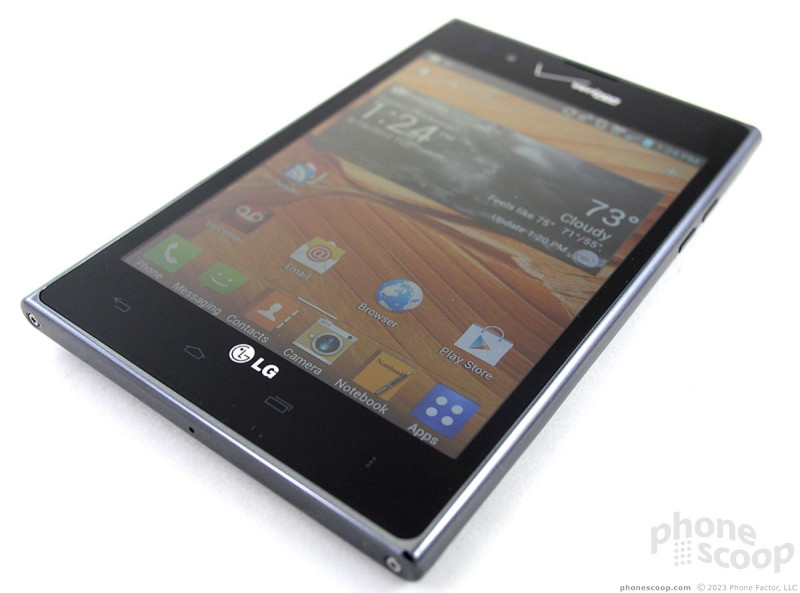















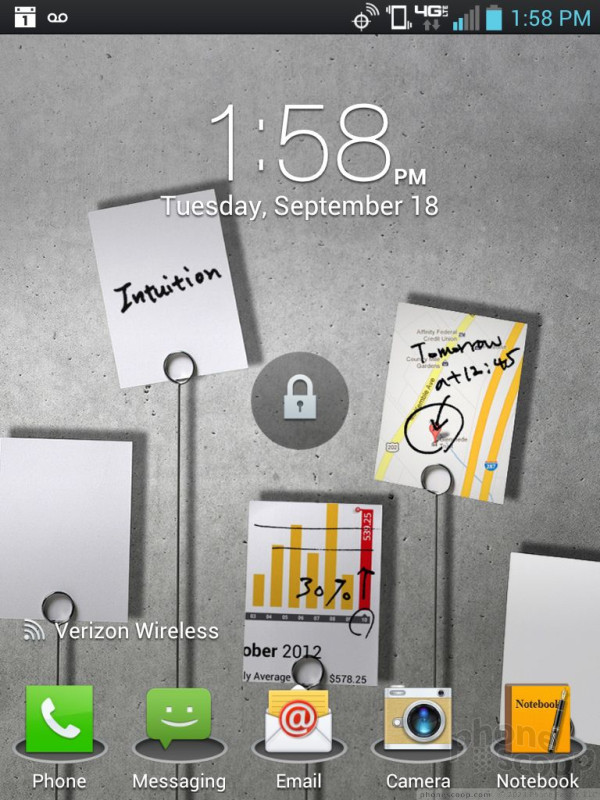







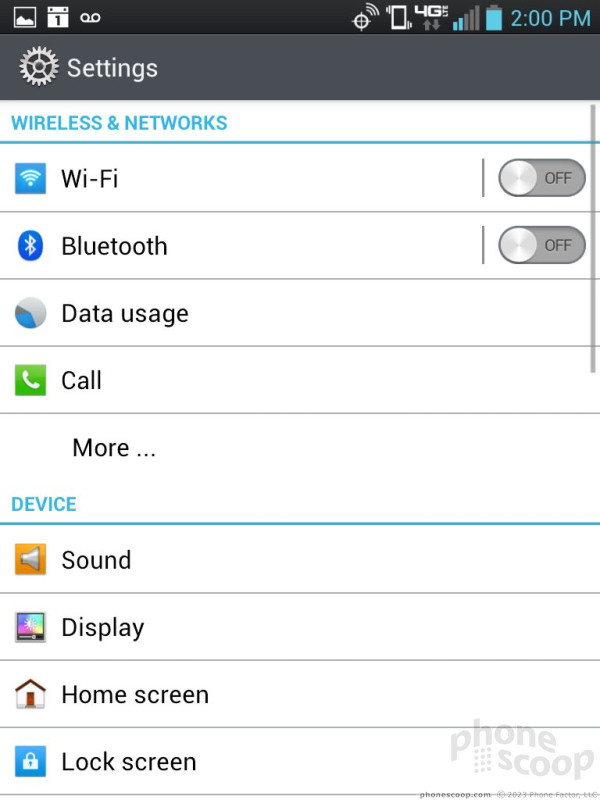










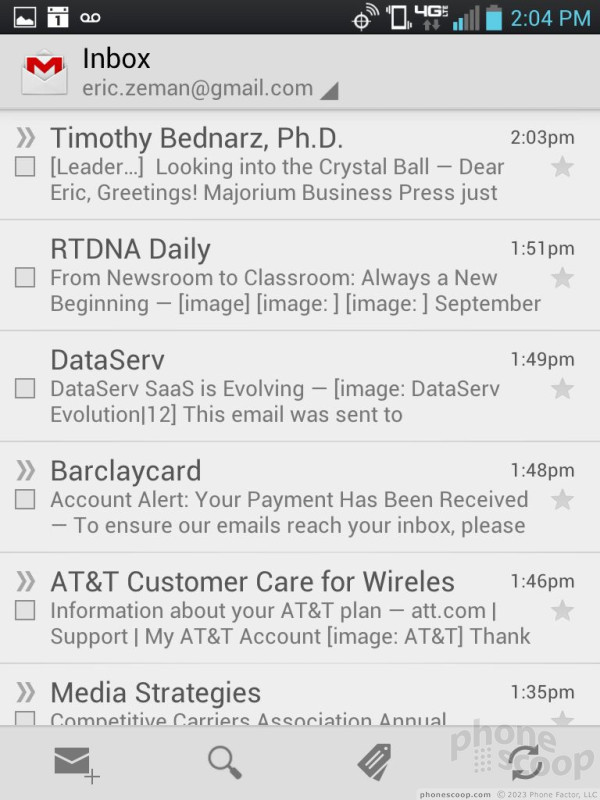





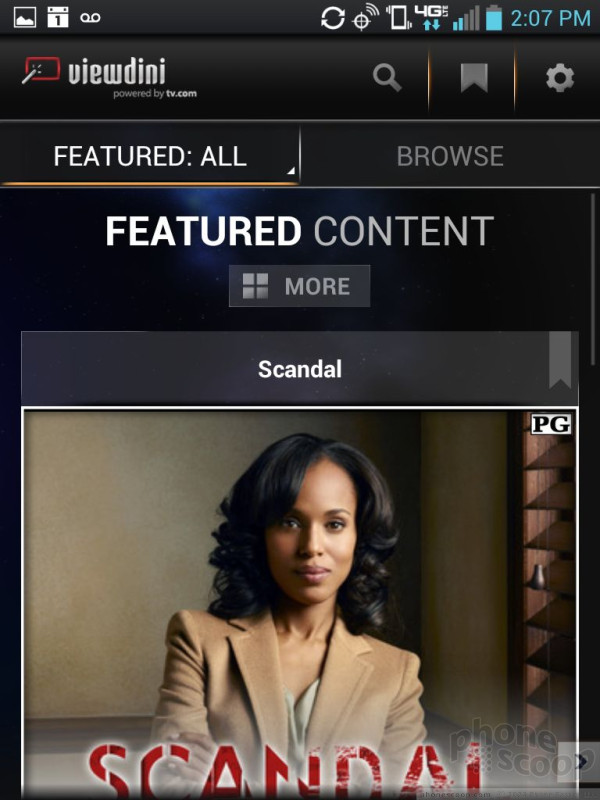







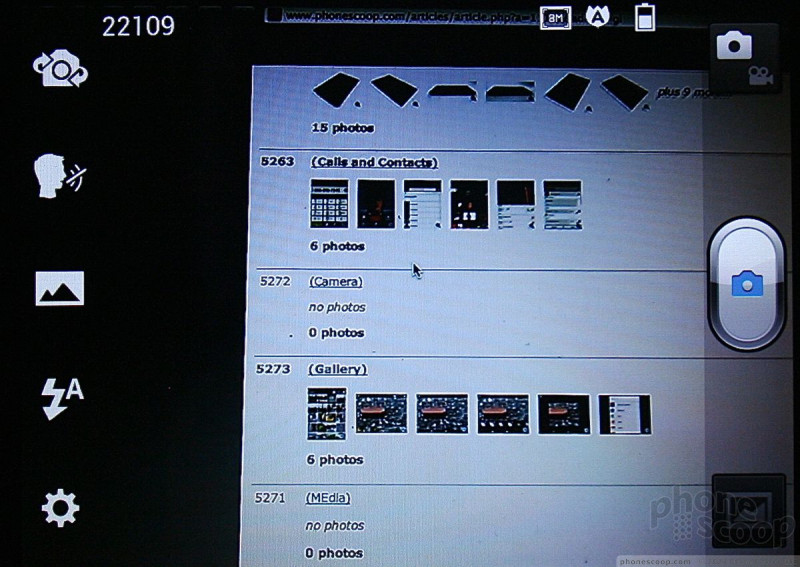




















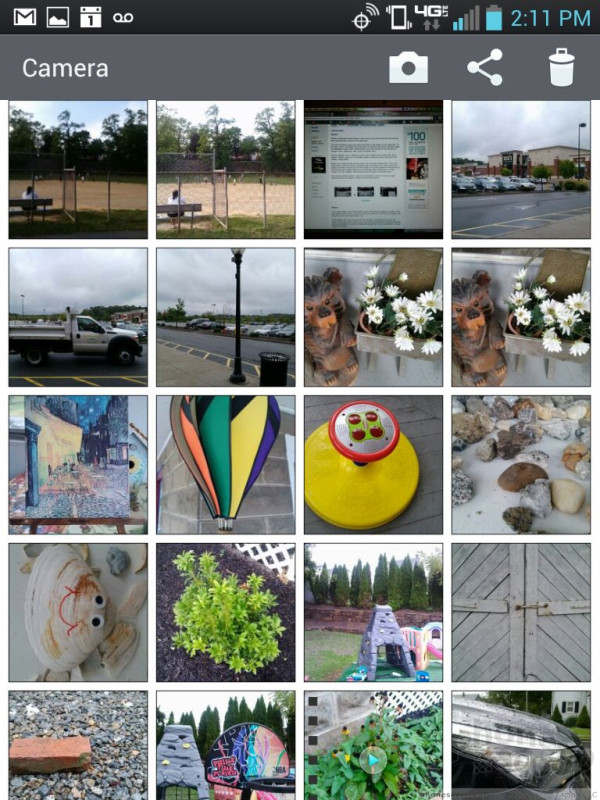






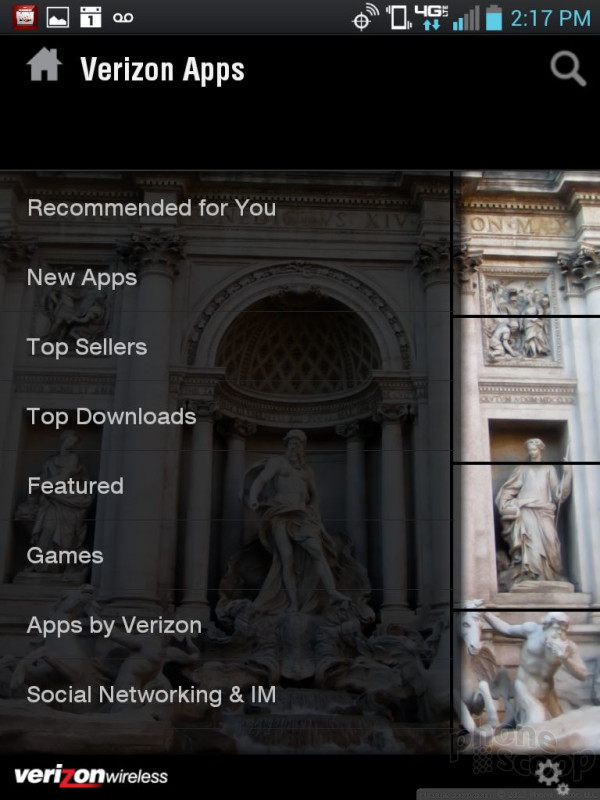



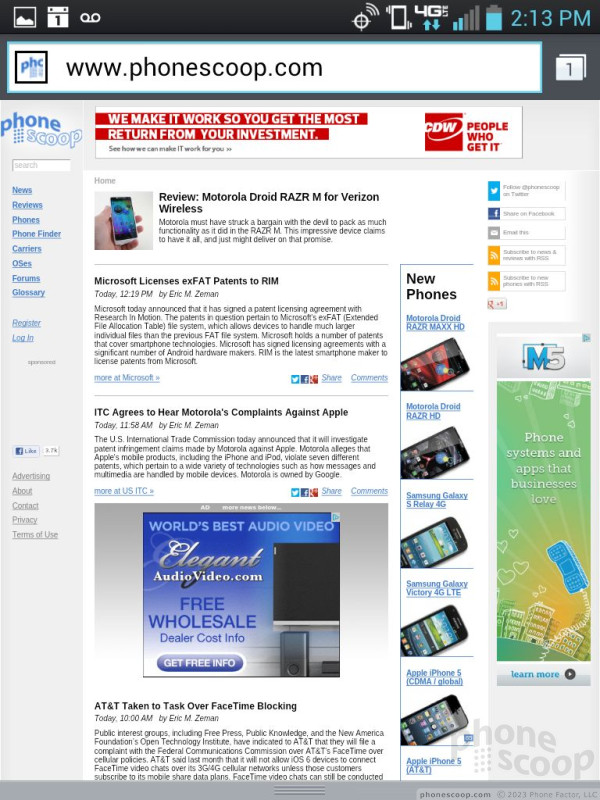





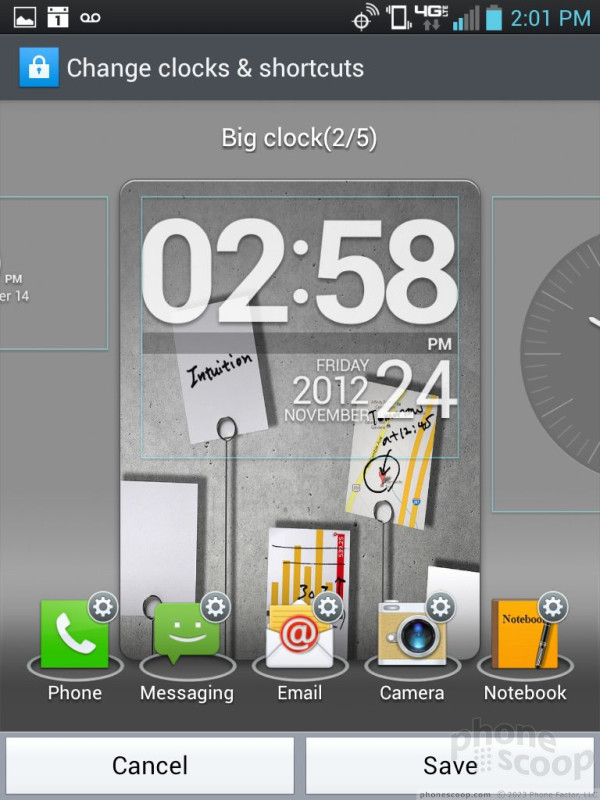



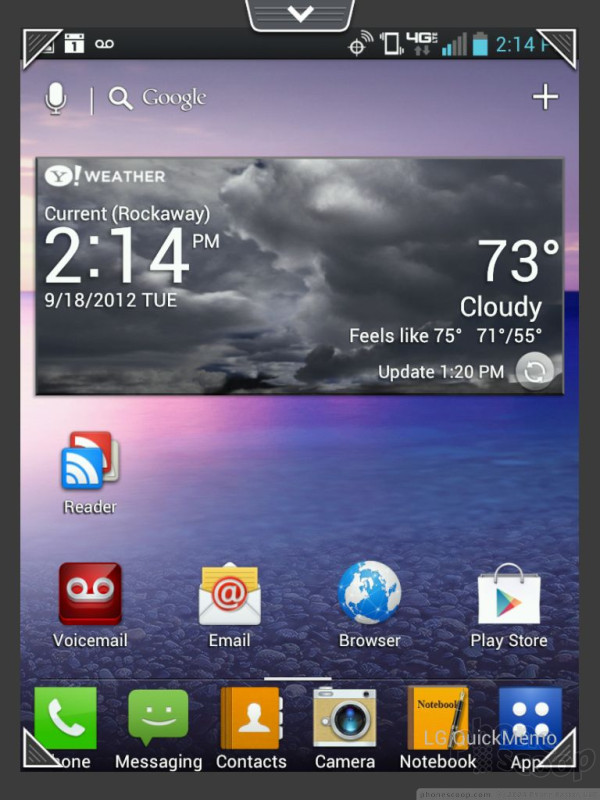









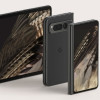 Google's Pixel Fold Goes After Samsung's Z Fold
Google's Pixel Fold Goes After Samsung's Z Fold
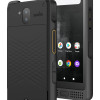 Verizon Continues Updating Rugged Lineup with Sonim XP10
Verizon Continues Updating Rugged Lineup with Sonim XP10
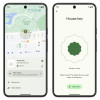 Google Launches New "Find My Device" Network
Google Launches New "Find My Device" Network
 iOS 18 Overhauls Home Screen, Messaging, Photos
iOS 18 Overhauls Home Screen, Messaging, Photos
 Google's Pixel Pro Phone now Comes in Two Sizes
Google's Pixel Pro Phone now Comes in Two Sizes









